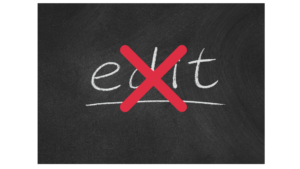Table of Contents
9th Circuit: Lien Avoidance Homestead Determined at Time of Bankruptcy Filing
If someone wants to avoid a judgment lien in bankruptcy, is the homestead exemption the one at the time the lien attached, or at the time of the bankruptcy filing? The Ninth Circuit Court of Appeals has recently weighed in, and the answer can affect thousands of dollars of liens on your home.
Why it matters
Liens in bankruptcy don’t usually go away. But there are times we bankruptcy lawyers can reduce or avoid liens. You may have heard that the California homestead exemption got a massive increase in 2021. This protects more home equity than ever before for people filing bankruptcy.
Now couple that with the fact that some liens in bankruptcy can be avoided if they impair an exemption. So, the bigger the exemption, the better the chances you can avoid a judgment lien and make thousands — or tens of thousands — of dollars of judgment liens disappear forever.
It’s very common for bankruptcy attorneys to be asked to remove an old judgment lien from a property. This can be done by reopening an old bankruptcy case where the lien then existed but wasn’t known, or filing a new case if the lien now impairs an exemption. But for a new case on an old lien, given that the homestead law just changed; there can be confusion which timing — and exemption amount — is used.
The question then is: to determine if the judgment lien impairs an exemption (a simple math problem), do we use the puny California homestead exemption at the time of the lien attaching where the lien won’t impair an exemption? Or the massively humongous homestead at the time of filing? It will determine the very question as to whether the lien can be removed in bankruptcy.
The Ninth Circuit, citing the Supreme Court, clarified which timing counts
In the battle of the clock, bankruptcy lawyers fight over which timing to use. The Ninth Circuit Court of Appeals just clarified the answer. It ruled that, “we must look to the amount of the homestead exemption that Boskoski could have claimed if, as Section 522(f) commands, the Greek Village lien against his property is disregarded.” Barclay v. Boskoski, WL 16911862 (9th Cir, Nov. 14, 2022).
In doing so, the Ninth Circuit relied on the U.S Supreme Court case of Owen v Owen, 500 US 305 (Supreme Court, 1991). The Owen case involved a 522(f) lien avoidance issue also. In that case, a judgment was entered against debtor. Creditor then recorded a lien against debtor’s property, and then state law changed to better protect debtor with a homestead exemption.
The Supreme Court ruled, “To determine the application of § 522(f) they ask not whether the lien impairs an exemption to which the debtor is in fact entitled, but whether it impairs an exemption to which he would have been entitled but for the lien itself.” Id. at 310-311. Or put differently, the language of 522f looks to the exemption the debtor would have been entitled but for the judgment lien.
And if there was no “old” judgment lien, the debtor “would be entitled” to today’s (larger) California homestead exemption. And that exemption is large enough where the lien would impair the exemption, and therefore can be avoided by 522(f).
A note about Wolfe v Jacobson
The creditor here, Barclay, argued that the Ninth Circuit was bound by Wolfe v Jacobson, 676 F.3d 1193, 1198 (9th Cir, 2012). It wanted “the entire state law” followed, per Jacobson at 1199. This Jacobson reading would have had the Barclay appellate court “apply all limitations that a state places on its exemptions when conducting the Bankruptcy Code’s lien avoidance calculation—including California’s limitations on the application of its homestead exemption.”
But the Ninth Circuit avoided that, and then pointed back to Owen, quoting the Supreme Court: “the Bankruptcy Code’s policy of permitting state-defined exemptions is not ‘absolute.'” Id. at 313. It found that the Owen case, involving lien avoidance, was a closer match than Jacobson, which doesn’t.
The 9th Circuit continued: “Anticipating the issue we address today, the Court held that ‘it is not inconsistent’ for the Code to allow states to define their own exemptions but ‘to have a policy disfavoring the impingement of certain types of liens upon exemptions, whether federal- or state-created.'”
In doing so, the Ninth Circuit in Barclay distanced itself further from Jacobson. Note that just a few months ago, new California SB1099 law was passed, which contained provisions which some speculate will limit Jacobson in other areas. By going out of its way to distinguish Barclay from it, it seems the Ninth Circuit is eroding the Jacobson holding without overturning it (yet).
The Ninth Circuit Already Ruled on Timing of Exemptions
The In re Barclay ruling is consistent with another case the Ninth Circuit affirmed on a very similar topic.
“It is well-established that the nature and extent of exemptions is determined as of the date that the bankruptcy petition is filed.”  In re Chiu, 266 B.R. 743, 751 (9th Cir BAP, 1999), later affirmed, 304 F.3d. 905 (9th Circuit Court of Appeals, 2002), citing White v Stump, 266 U.S. 310, 313 (Supreme Court, 1924).
The Ninth Circuit in Barclay vs Boskoski, without going into much detail, gave a hat tip in passing to Stump above and its “snapshot rule.”
So, everything points in the same direction and lands at the same place. Exemptions are decided at the time of filing, and not the time of the (much) earlier lien attaching. This is consistent with the holdings of the 9th Circuit in Chiu, the Supreme Court in White v Stump, and the Supreme Court in Owen, which got there using different rationale and analysis.
All in all, good news for debtors!





